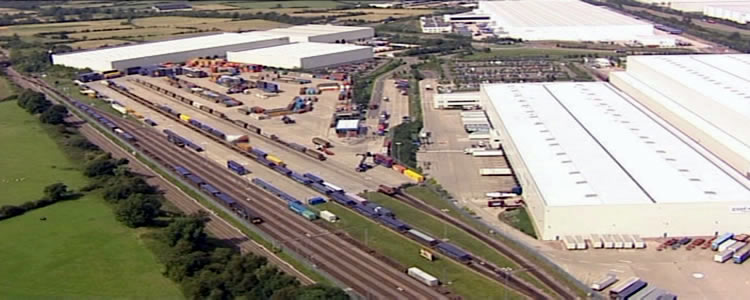

The opening of the Channel Tunnel in 1994 spawned a small number of new railfreight interchanges in the UK, including DIRFT (Daventry International Rail Freight Terminal), created at a strategic location alongside the M1 motorway (Junction 18) and the West Coast Main Line railway.
DIRFT's 174 hectare (364 acre) site includes railfreight interchange facilities integrated with the surrounding distribution park. The site has an “Open Access” rail freight interchange, currently served by three of the seven licensed rail freight operating companies on a daily basis.
DIRFT is linked by rail to the UK's major deepsea ports, to mainland Europe and to inland terminals in the North West and Scotland. The site has handled up to 12 trains in and out per day, for household names including Asda, M&S, Morrisons, Sainsburys and Tate & Lyle.
Since opening in 1996, DIRFT now employs several thousand people on site, and like many modern distribution developments, provides a range of employment opportunities in logistics, across managerial, IT systems, administrative and operational functions.DIRFT 2 is a phased expansion on land located to the immediate west of the existing complex, on a site of 53.8 hectares. This will take the combined development at DIRFT to a total floorspace of 570,000 square metres, with around 40% of this capable of having direct rail connections.
DIRFT demonstrates how a successful interchange can create major new railfreight opportunities and stimulate the local economy. Responding to these opportunities, the UK Government has itself developed specific policy guidance on Strategic Rail Freight Interchanges (SRFI) - click on the links:
- SRFI policy originally developed in 2004
- Status of the SRFI policy guidance
- The Government's plans for a Strategic Rail Freight Network (SRFN)
- The Government's latest policy document covering the SRFN and SRFI (see Appendix D)
Our vision is to see a network created across the UK, with a small number of large 'strategic' interchanges linked together with the ports and other inland terminals. The current network provision can be viewed here, while the potential network which could be in place by 2020 can be viewed here. Government and Network Rail proposals for the strategic freight network can be viewed here. (Adobe® Reader® required, download by clicking on the Adobe® logo below)
© Copyright RIIG 2010